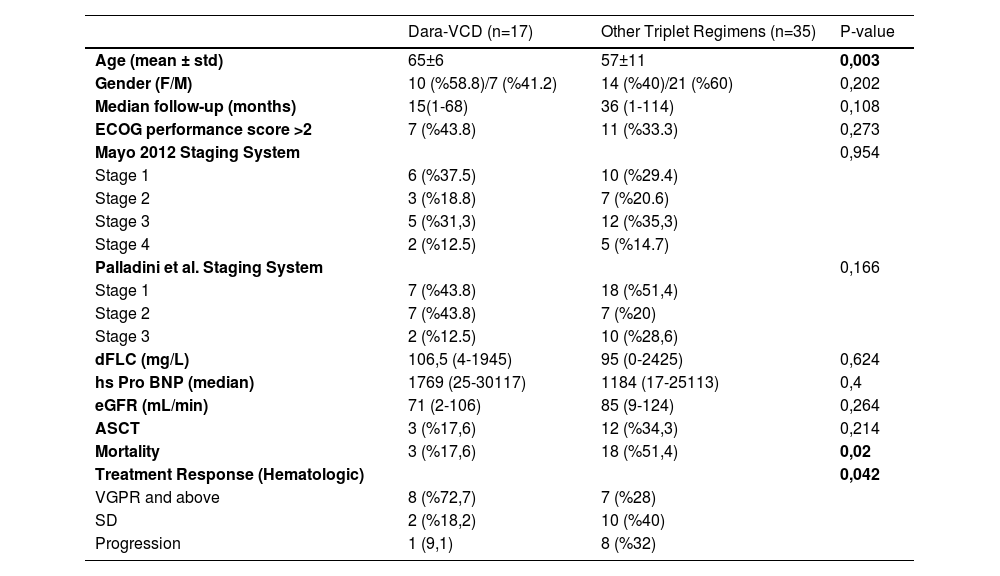
Hematology Specialist Association 18. National Congress
Mais dadosSystemic amyloidosis results from the production of misfolded immunoglobulin light chains by monoclonal CD38+ plasma cells. These misfolded light chains form amyloid fibrils, which accumulate in various tissues and cause organ damage. Following the results of the Phase 3 ANDROMEDA study, where the addition of daratumumab, an anti-CD38 agent, to first-line treatment showed favorable outcomes, Dara-VCD has become a standard first-line therapy. In this study, we compared the outcomes of patients with AL amyloidosis who were treated with first-line Dara-VCD in our clinic to those treated with other triplet regimens.
MethodologyPatient's data with AL amyloidosis followed between 2010 and 2024 were retrospectively reviewed from the institution's database. Two groups were established patients treated with Dara-VCD and those without Dara. The clinical characteristics and response criteria were compared using SPSS 21.
ResultsA total of 52 patients were included in the study, with a mean age of 60 ± 10 years for the entire group. There was no statistically significant difference in the demographic distribution between the groups (p = 0.003). The median follow-up period was 32 months (1-114 months). In 27 (51.9%) patients, cardiac involvement was present, and 26 (50%) had renal involvement. The stages of these involvements are summarized in Table 1. In the group treated without Dara, the triplet regimens were VCD (n=30), VRD (n=3), and VMP (n=2).
Mortality was significantly lower in the Dara-VCD group. When evaluating responses, progression was only in 1 (9%) patient in the Dara group, whereas in 8 (32%) in the without Dara group.
The overall survival was not statistically significant between the two groups (log-rank p=0.394). (Figure 1).
ConclusionWe used Dara after Health Authority approval and reimbursement in our country. So, we get the opportunity to compare Dara-added VCD effectiveness to VCD or VRD as a real-life analysis. Dara-VCD resulted in a significantly lower rate of progression and mortality compared to those without Dara. The follow-up duration was shorter for comment on overall survival. Additionally, 10 patients without the Dara group, did receive daratumumab with VCD (n=5), or with other agents (n=5)). With this study, we documented from a real-life experience addition of daratumumab to the VCD regimen in first-line treatment reduces mortality and progression in AL amyloidosis.
Patient Characteristics
Figure 1: Overall Survival in Dara-VCD and without-Dara Triplet Treatment Groups









